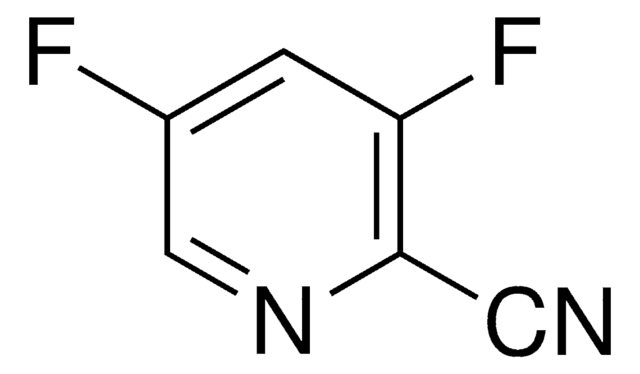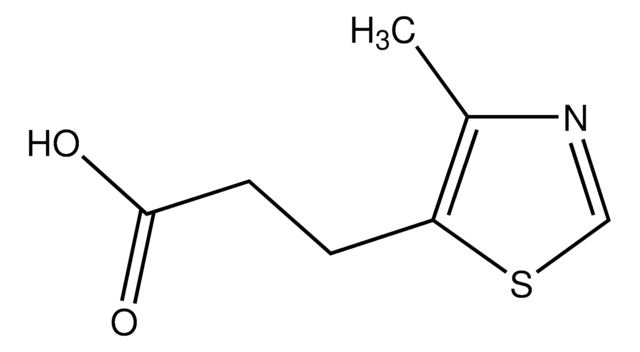Kluczowe dokumenty
04642
3-Acetylpyridine
analytical standard
Synonim(y):
Methyl 3-pyridyl ketone
About This Item
Polecane produkty
klasa czystości
analytical standard
Poziom jakości
Próba
≥99.0% (GC)
okres trwałości
limited shelf life, expiry date on the label
metody
HPLC: suitable
gas chromatography (GC): suitable
współczynnik refrakcji
n20/D 1.534 (lit.)
n20/D 1.535
bp
220 °C (lit.)
mp
11-13 °C (lit.)
gęstość
1.102 g/mL at 25 °C (lit.)
Zastosowanie
cleaning products
cosmetics
environmental
flavors and fragrances
food and beverages
personal care
Format
neat
ciąg SMILES
CC(=O)c1cccnc1
InChI
1S/C7H7NO/c1-6(9)7-3-2-4-8-5-7/h2-5H,1H3
Klucz InChI
WEGYGNROSJDEIW-UHFFFAOYSA-N
Szukasz podobnych produktów? Odwiedź Przewodnik dotyczący porównywania produktów
Przestroga
Hasło ostrzegawcze
Danger
Zwroty wskazujące rodzaj zagrożenia
Zwroty wskazujące środki ostrożności
Klasyfikacja zagrożeń
Acute Tox. 3 Oral - Skin Irrit. 2
Kod klasy składowania
6.1C - Combustible acute toxic Cat.3 / toxic compounds or compounds which causing chronic effects
Klasa zagrożenia wodnego (WGK)
WGK 1
Temperatura zapłonu (°F)
219.2 °F - closed cup
Temperatura zapłonu (°C)
104 °C - closed cup
Środki ochrony indywidualnej
Eyeshields, Faceshields, Gloves, type ABEK (EN14387) respirator filter
Wybierz jedną z najnowszych wersji:
Certyfikaty analizy (CoA)
Nie widzisz odpowiedniej wersji?
Jeśli potrzebujesz konkretnej wersji, możesz wyszukać konkretny certyfikat według numeru partii lub serii.
Masz już ten produkt?
Dokumenty związane z niedawno zakupionymi produktami zostały zamieszczone w Bibliotece dokumentów.
Nasz zespół naukowców ma doświadczenie we wszystkich obszarach badań, w tym w naukach przyrodniczych, materiałoznawstwie, syntezie chemicznej, chromatografii, analityce i wielu innych dziedzinach.
Skontaktuj się z zespołem ds. pomocy technicznej







![Bis[(pinacolato)boryl]methane](/deepweb/assets/sigmaaldrich/product/structures/286/283/dcb13110-c536-4223-99e6-0dd505906b64/640/dcb13110-c536-4223-99e6-0dd505906b64.png)
